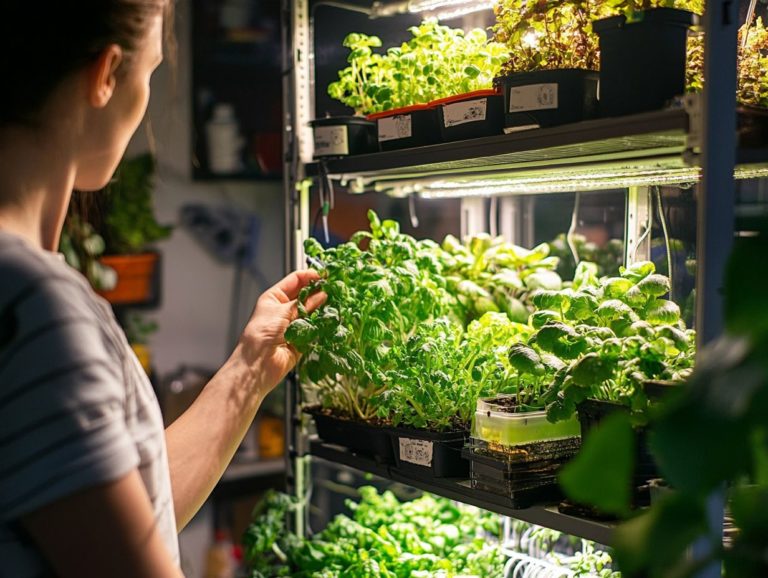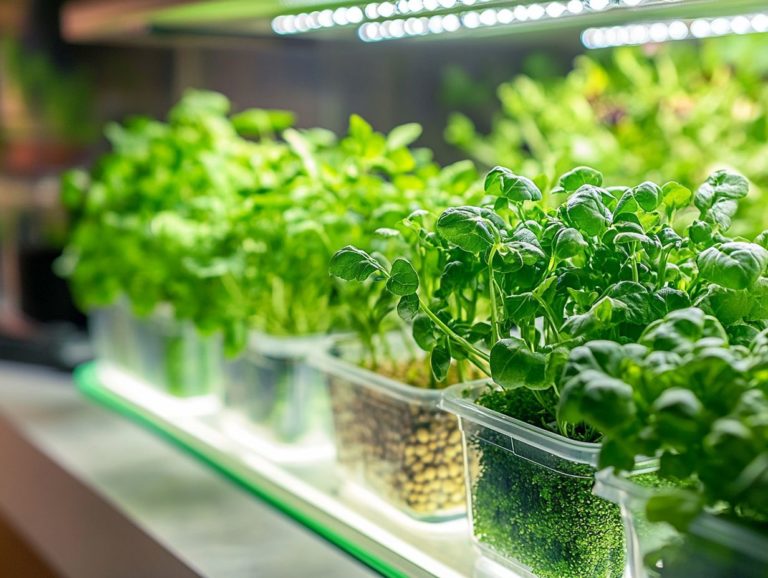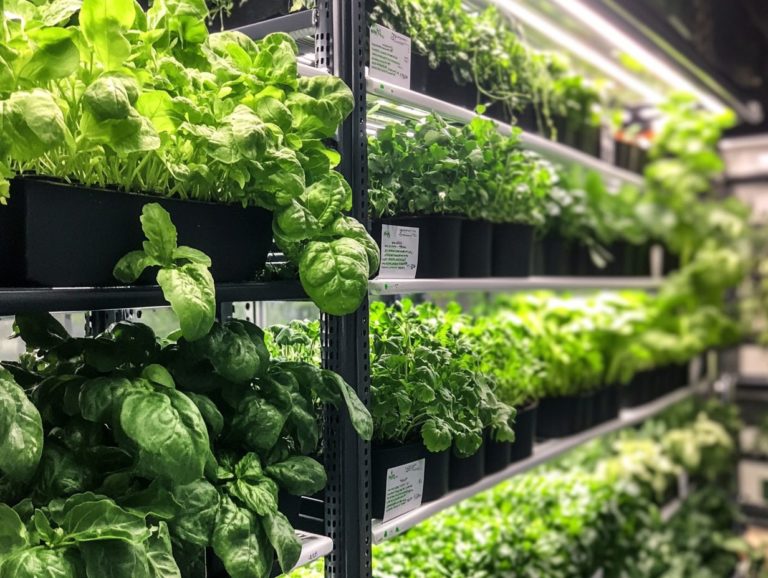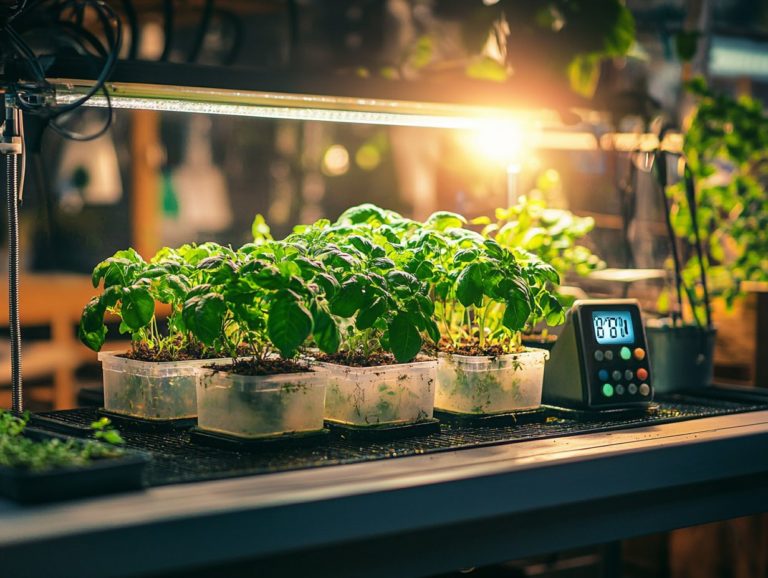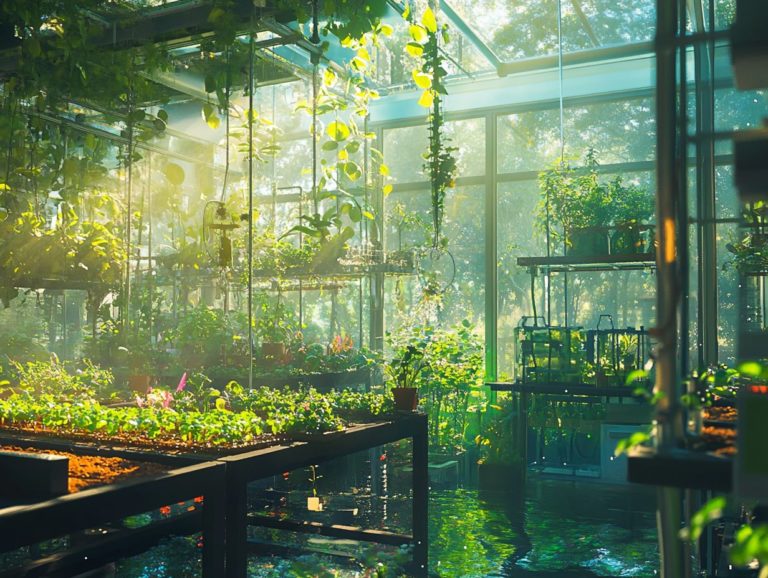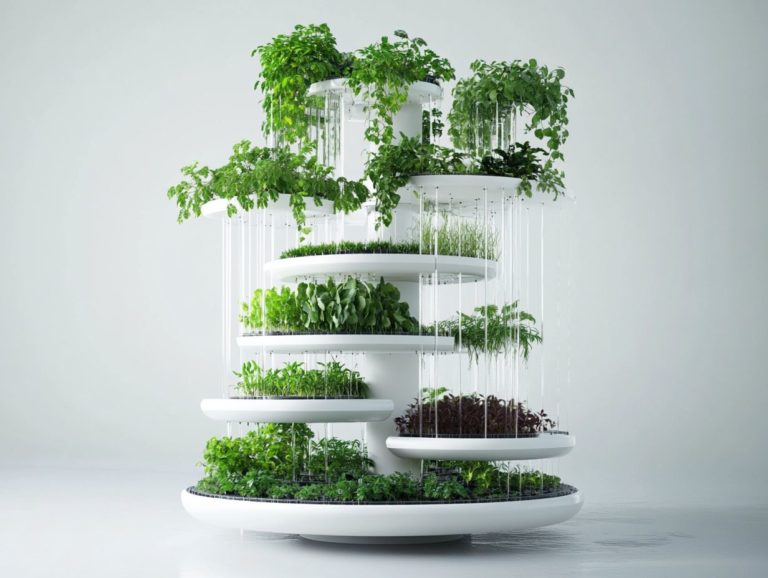The Pros and Cons of Media-Based Hydroponics
Media-based hydroponics offers an innovative way to cultivate plants without soil. It uses various substrates that anchor roots and deliver essential nutrients.
This method is cost-effective and provides numerous benefits for plant growth and yield. However, be aware of some challenges and environmental considerations.
This article explores the advantages and drawbacks of media-based hydroponics. We ll guide you in selecting the best growing media and share essential tips for success.
Whether you’re a seasoned gardener or just starting, dive into this exciting growing technique!
Contents
- Key Takeaways:
- The Pros of Media-Based Hydroponics
- What to Watch Out For in Media-Based Hydroponics
- Choosing the Right Media for Hydroponics
- Success Tips for Media-Based Hydroponics
- Frequently Asked Questions
- What is media-based hydroponics and how does it work?
- What are the pros of using media-based hydroponics?
- What are the cons of using media-based hydroponics?
- Can media-based hydroponics be used for all types of plants?
- What are the environmental benefits of media-based hydroponics?
- Are there any maintenance tasks required for media-based hydroponics?
Key Takeaways:
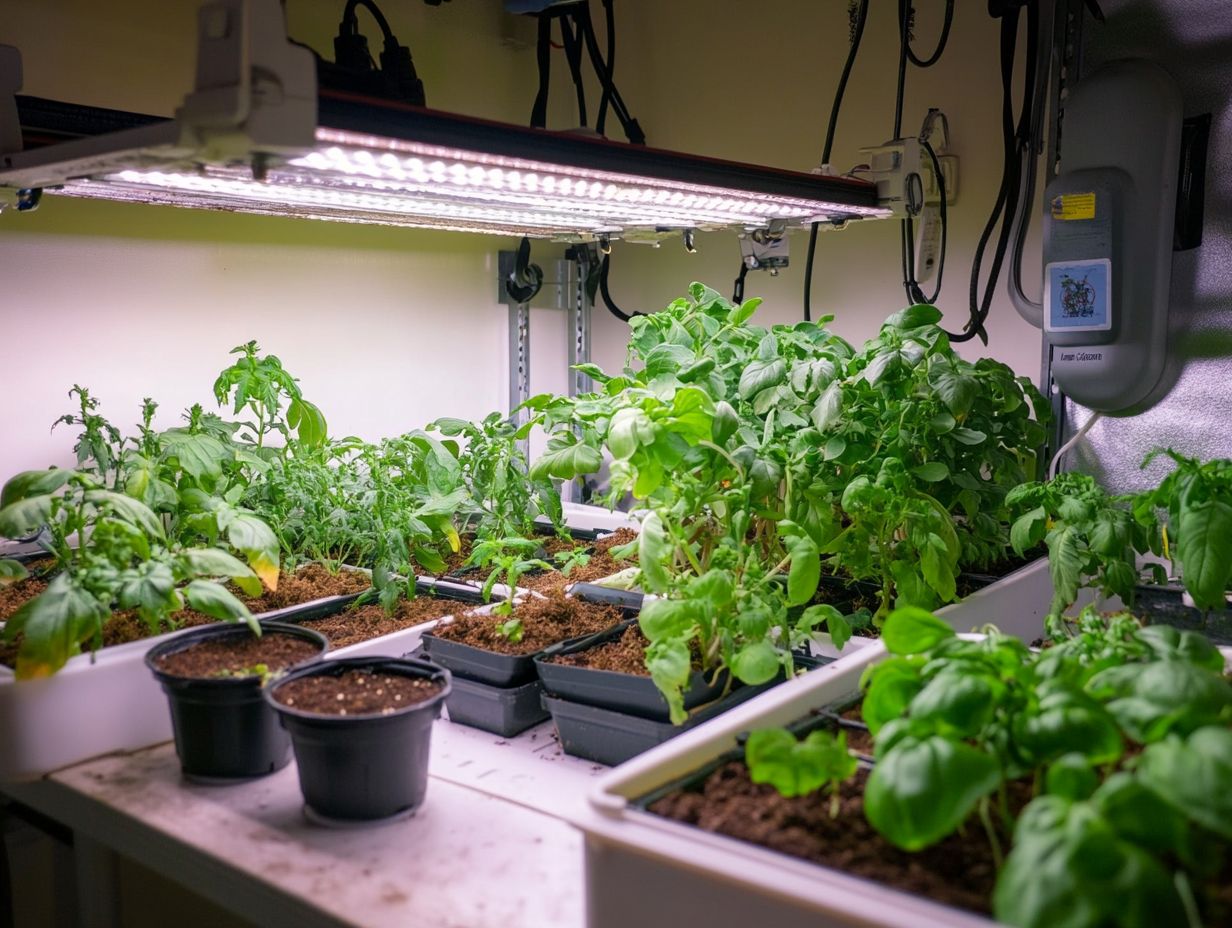
- Media-based hydroponics offers numerous benefits for nutrient uptake for plant growth and yield, making it a popular choice among growers.
- One of the biggest advantages of media-based hydroponics is its cost-effectiveness, as it requires less water, nutrients, and maintenance compared to traditional soil farming.
- However, media-based hydroponics also has its drawbacks, including potential risks and challenges such as disease and pH stability imbalances, as well as its impact on the environment.
What is Media-Based Hydroponics?
Media-based hydroponics is an advanced way to grow plants without soil. It uses various substrates that provide support and optimize nutrient delivery for healthy root growth.
Unlike traditional soil gardening, nutrients reach plants through organic matter. Media-based hydroponics employs carefully chosen substrates that anchor your plants and manage water retention and drainage effectively.
Take coco coir, for example. Sourced from coconut husks, it excels in moisture retention while keeping air pockets open for roots to breathe. Expanded clay pellets offer exceptional drainage and aeration, allowing roots to access the oxygen they need for vigorous growth.
The substrate you select plays a key role in how well the nutrient solution is absorbed. This fosters strong root development and minimizes the risk of root diseases that can arise in overly wet conditions. With this innovative system, you can experience faster plant growth, higher yields, and a more controlled growing environment representing a significant evolution from traditional gardening methods.
The Pros of Media-Based Hydroponics
Media-based hydroponics has many advantages that make it a favored choice among horticulturists and growers. By using efficient systems and optimal growing mediums like coco coir and expanded clay pellets, you not only enhance plant growth but also significantly increase yield.
This approach is a cost-effective solution for sustainable agricultural practices, making it a smart investment for those looking to thrive in the world of cultivation.
Benefits for Plant Growth and Yield
The benefits of media-based hydroponics for plant growth and yield are remarkable. This method greatly improves nutrient uptake and root health.
By choosing lightweight media like coco coir and expanded clay pellets, you create an environment that optimally balances aeration and moisture retention. This results in healthier, more productive plants.
This method fosters a strong root system that efficiently absorbs essential nutrients while minimizing the weight load, making management easy. The choice of substrate is crucial; for instance, coconut coir naturally retains nutrients while allowing excess water to drain away, thus preventing root rot.
In contrast, expanded clay pellets excel in drainage and air circulation, promoting healthier roots. By selecting the right media for your setup, you can maximize your yield and ensure that your plants receive the perfect balance of water and nutrients they need for optimal growth.
Cost-Effectiveness
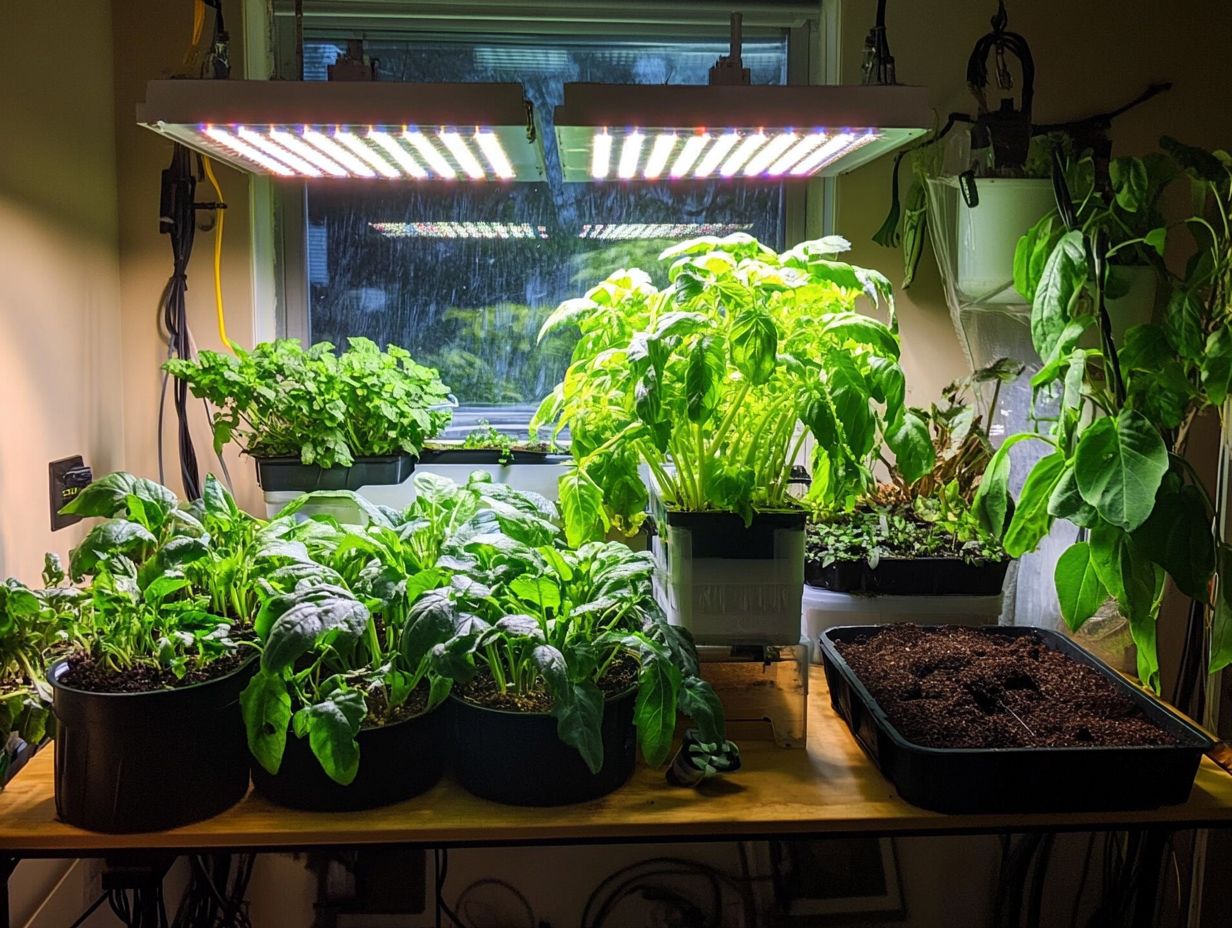
The cost-effectiveness of Media-Based Hydroponics lies in its resource-efficient design. This allows you to maximize output while keeping expenses in check.
By using versatile growing materials like compost, perlite, and biodegradable materials, you can minimize the need for extensive inputs. This still enables you to achieve high-quality yields and sustainable options.
This method makes growing plants easier and more fun! It also promotes the use of organic mediums that enhance soil health and minimize environmental impact.
By thoughtfully managing plant food, you can further bolster your sustainability efforts. This ensures that your plants receive essential minerals without the downsides of chemical fertilizers.
As you embrace these eco-friendly practices, you stand to gain significant savings in both labor and materials. This makes Media-Based Hydroponics an enticing option.
By striking a balance between resource efficiency and optimal plant growth, this innovative technique creates a win-win scenario for both you and the planet.
What to Watch Out For in Media-Based Hydroponics
While Media-Based Hydroponics presents a wealth of advantages, it also carries its share of drawbacks. These could pose potential risks and challenges for you as a grower.
These issues may arise from improper growing material selection, maintenance hurdles, and the environmental ramifications linked to specific media.
It s essential to weigh these factors thoughtfully before fully committing to this cultivation method.
Potential Risks and Challenges
The potential risks and challenges in Media-Based Hydroponics can significantly impact your plant health and yield. Act quickly to address these issues!
Factors such as fluctuating moisture levels, improper plant food, and inadequate aeration can adversely affect the root ball. This can lead to diminished growth and even crop failure.
Managing the consistency of these essential elements requires constant monitoring and adjustments. This might feel overwhelming at times.
Inadequate moisture control not only hampers nutrient uptake but also raises the risk of root diseases, complicating your cultivation efforts further.
If your plant food isn’t carefully balanced, it can lead to nutrient deficiencies or toxicities. This can result in stunted growth or, in the worst-case scenario, plant death.
Understanding these fundamental challenges is crucial for anyone aiming for success in Media-Based Hydroponics. Neglecting even one aspect can lead to significant financial losses and a compromised harvest.
Environmental Impact
The environmental impact of Media-Based Hydroponics varies significantly based on the growing materials you choose and the practices you implement. By incorporating sustainable options like biodegradable materials and compost, you can mitigate negative effects.
When you select organic growing media such as coconut coir or recycled paper, you’re taking a substantial step toward reducing your carbon footprint. You’re also nurturing healthier ecosystems.
It’s crucial to evaluate the life cycle of these materials. Some may provide considerable advantages over traditional growing materials that deplete natural resources.
By embracing practices like reusing and recycling materials, you can further enhance sustainability and minimize waste. Ultimately, choosing environmentally considerate growing solutions benefits the planet and elevates crop quality.
This creates a harmonious balance between agriculture and ecological stewardship.
Choosing the Right Media for Hydroponics
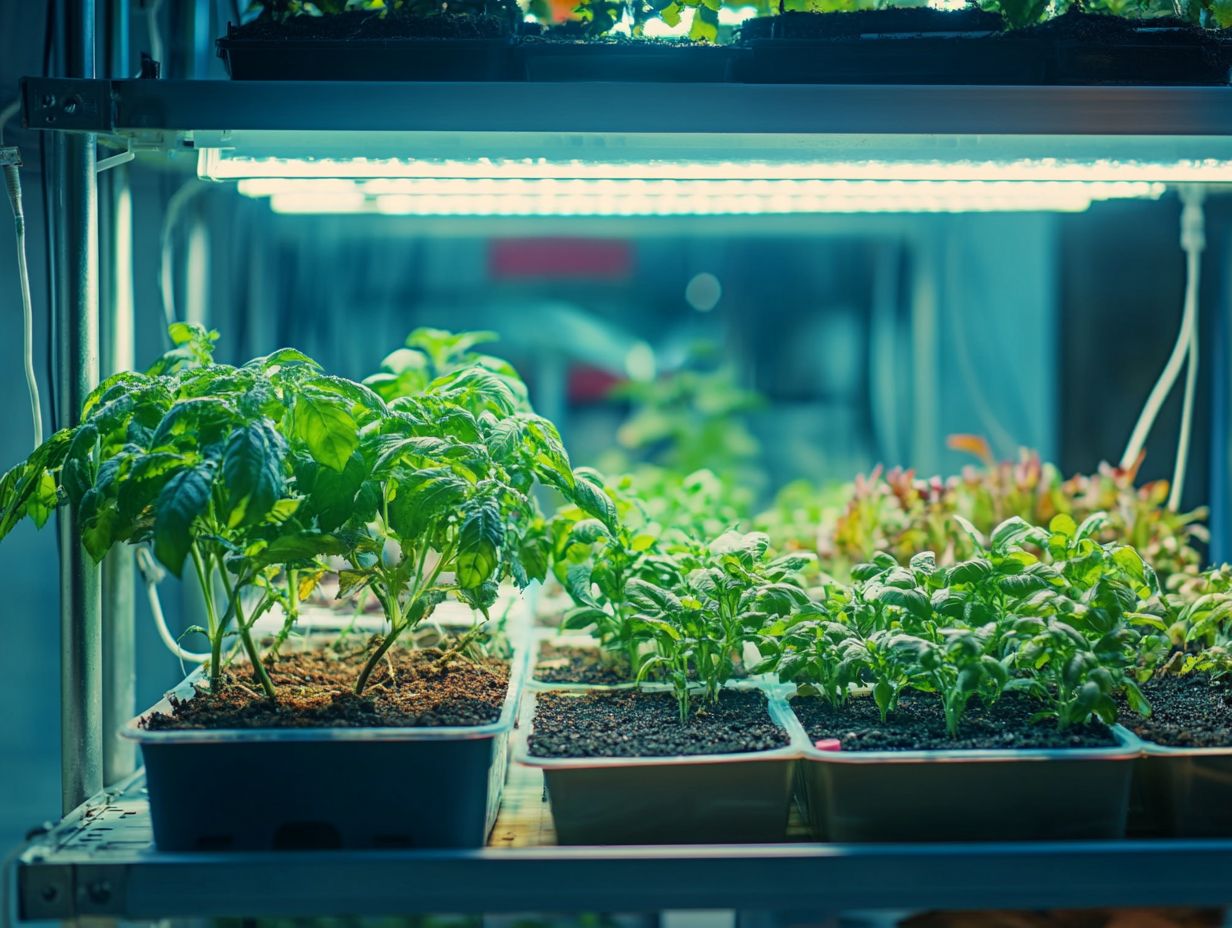
Selecting the ideal media for hydroponics is a pivotal choice. It can significantly influence the health, growth, and yield of your plants.
It s essential to assess factors such as moisture levels, nutrient availability, and aeration properties with precision.
When choosing among options like coco coir, rockwool, perlite, expanded clay pellets, and vermiculite, consider how each will serve your specific needs.
Enhance your hydroponic experience by making an informed choice!
Start your hydroponics journey today and experience the benefits firsthand!
Options and Considerations
When considering your options for hydroponic media, you should first understand what your plants need for the best results. Whether you lean toward coco coir, expanded clay pellets, rockwool, or other media, each brings unique characteristics that impact moisture retention, aeration, and the effectiveness of your nutrient solution.
Each option has its own advantages and drawbacks. For example, coco coir is renewable and excels at retaining moisture, making it ideal for plants that thrive on consistent hydration. However, if not properly buffered, it can lead to nutrient imbalances that could affect growth.
Expanded clay pellets are fantastic for aeration and drainage, making them versatile for various plants. However, they tend to be heavier and pricier. Rockwool is well-regarded for its insulation properties, but consider the environmental concerns associated with its non-biodegradable nature.
Now s the time to weigh these factors against your specific crop and growing environment to choose the most effective medium for your hydroponic setup.
Success Tips for Media-Based Hydroponics
Ensuring your success in media-based hydroponics hinges on your commitment to best practices and meticulous maintenance. Both are essential for nurturing root health and maximizing your yield.
You need to be adept at managing moisture levels, nutrient solutions, and substrate selection to create the ideal growing environment.
Best Practices and Maintenance
Implementing best practices in media-based hydroponics is essential for maintaining optimal conditions and ensuring the health of your plants. Key aspects include regularly monitoring your nutrient solutions and maintaining the right aeration properties. Adjusting moisture levels is also crucial to support robust root systems.
These practices help plants absorb nutrients and grow healthily while helping to prevent diseases. Regularly testing pH and electrical conductivity is vital, ensuring your plants receive a balanced supply of nutrients that directly influences their vitality.
Providing sufficient aeration is vital, as it helps prevent a lack of oxygen that can harm roots and stunt growth. Careful moisture control is equally important; over-saturation can lead to root rot, while insufficient moisture can stress your plants and hinder nutrient absorption. Together, these elements are crucial in cultivating thriving hydroponic systems.
Frequently Asked Questions
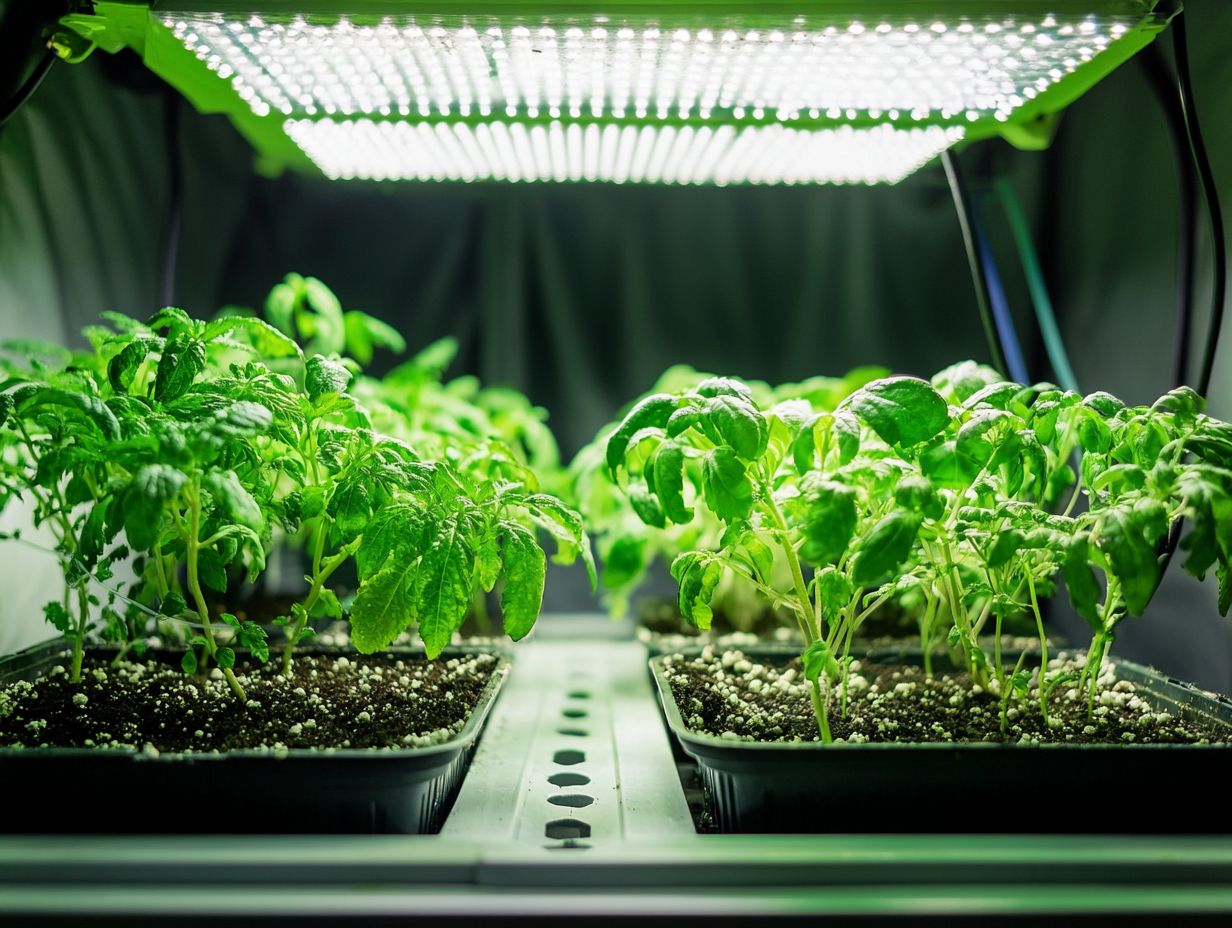
What is media-based hydroponics and how does it work?
Media-based hydroponics is a method of growing plants without soil, using a medium such as gravel, coco coir, or perlite to support the roots. The plants are fed a nutrient solution through irrigation, allowing them to grow in a controlled environment.
What are the pros of using media-based hydroponics?
One of the main benefits of media-based hydroponics is that it allows for greater control over the plant’s nutrient intake, leading to faster growth and higher yields. It also eliminates the need for soil, which can be messy and prone to pests.
What are the cons of using media-based hydroponics?
One potential drawback is the initial cost of setup, as it often requires specialized equipment and materials. If the system is not properly maintained, it can be more prone to clogs and blockages.
Can media-based hydroponics be used for all types of plants?
Yes, media-based hydroponics can be used for a wide variety of plants, from leafy greens to fruit-bearing plants. However, certain plants may require specific nutrient solutions and adjustments to the growing environment.
What are the environmental benefits of media-based hydroponics?
Compared to traditional soil-based agriculture, media-based hydroponics uses less water and nutrients, making it a more sustainable option. It also reduces the need for pesticides, as the controlled environment makes it less susceptible to pest infestations.
Are there any maintenance tasks required for media-based hydroponics?
Yes, media-based hydroponics systems require regular maintenance. This includes checking and adjusting pH levels (a measure of acidity) and monitoring nutrient levels (the essential elements plants need to grow).
Cleaning and replacing the medium is also necessary. The great news is that these tasks are less demanding than traditional soil-based gardening!

